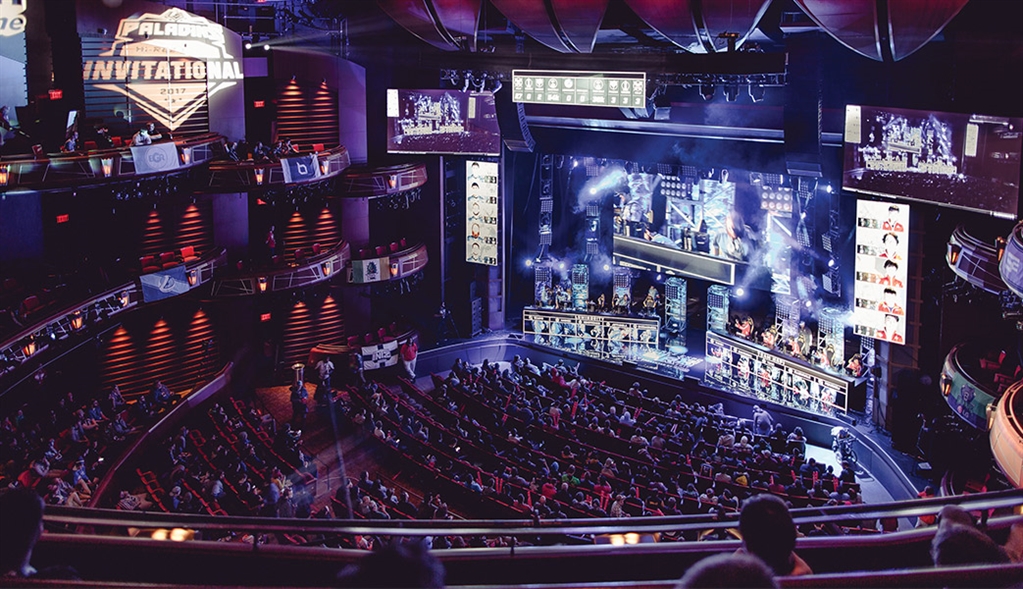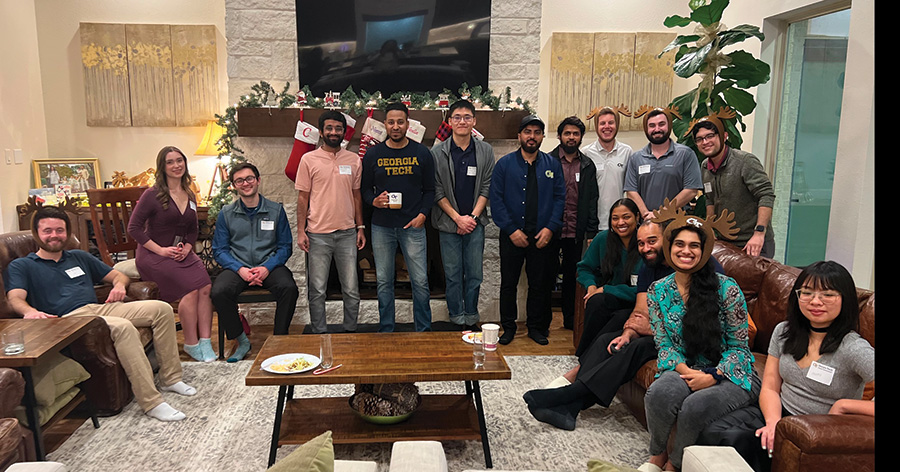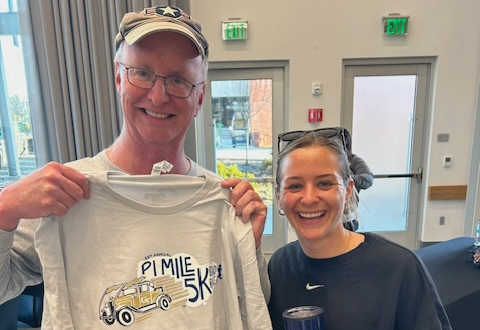Game Changers
By: Roger Slavens | Categories: Alumni Interest

Traditional sports such as football, soccer, baseball and basketball still represent a good chunk of the world’s attention and spending on entertainment. But these popular pastimes are faced with a relatively new, up-and-coming contender that may surprise you: competitive, professional video gaming.
Also known as eSports, the industry boasts revenues that are expected to reach $696 million in 2017, a year-on-year growth of 41.3 percent, according to market analysis firm Newzoo. Much of this money will come from marketers—both endemic (like Sony) and non-endemic (Monster Energy Drink)—who will spend a total of $517 million this year, in-cluding an estimated $155 million on advertising, $266 million on sponsorships and $95 million on media rights. Game pub-lishers will invest another $116 million on partnership deals with tournament organizers, and consumers will spend $64 million on live show tickets and merchandising. What’s more, the eSports industry is expected to more than double in size to $1.5 billion by 2020.
This is not going over to your friend’s house, sitting on their couch and boredly watching others play Donkey Kong while you wait your turn. This is millions of fans watching the best gamers in the world play online—usually for free on streaming platforms such as Twitch or YouTube—and then forking over hundreds of dollars to attend tournaments to see eSports teams battle it out live in sold-out arenas.
From Coca-Cola to Team Envy
The parallels between eSports and traditional sports may appear a stretch, but they’re not, says John Brock III, ChE 70, MS ChE 71, Hon PhD 16.
“When I was a kid, I went outside and played basketball or football and then followed the pros,” says Brock III, the retired CEO of Coca-Cola Enterprises who is a strategic advisor and investor in Team Envy, one of the largest and most success-ful eSports organizations in the world. “It’s exactly the same thing with professional gaming. Today’s young people grow up spending a lot of their time playing video games and they want to follow and root for the best players in the world.”
Brock says he was surprised and a bit skeptical when his son, John Brock IV, introduced him to the concept of eSports nearly two years ago. “He was interested in investing in (and then ultimately becoming a co-owner of) Team Envy, and asked me to join him,” Brock III says. “As an engineer, I had to look at the data first—but it quickly became very clear just from the trends in audience and revenue that eSports was a very real, very fast-growing phenomenon.”
Team Envy fields teams in eight different games, including League of Legends (multiplayer fantasy battle arena game), Overwatch (multiplayer sci-fi first-person shooter), Call of Duty (realistic war FPS) and others. In addition to employing players from across the globe, Team Envy also supports the players with coaches, trainers and facilities so they can bet-ter hone their performance, Brock IV says.
“Teams like ours generate revenue in many different ways, from prize money won at tournaments to player appearance fees to merchandising,” says Brock IV, now Team Envy’s chief business officer. “But we make the most money from our spon-sors. Marketers want to build brand awareness with 18-35 year olds, and there’s probably no better way to reach them today.”
What’s tricky for team owners, players and fans alike is that each eSport is run completely differently. “The game publishers like Activision Blizzard or Riot Games or metro Atlanta’s own Hi-Rez Studios own the games and the intel-lectual property that go with them,” Brock III says. “They set the rules on who can compete and how individuals and team owners can make money. There’s no independent governing body involved like the NCAA or NFL.”
Interestingly, Activision Blizzard, which publishes Over-watch, is creating a franchise league system for teams that’s not unlike the NFL, charging teams a franchise fee and then placing one in each of 12 different cities around the world and having them build home arenas. As announced in late September, an eight-figure investment from the Hirsch In-teractive Group enabled Team Envy to be awarded one of those franchises in the Dallas market. Activison Blizzard in-tends to expand the league up to a total of 28 cities, almost as many as in the NFL.
The Game Publishers Point of View
Hi-Rez Studios is among the videogame developers that bet on eSports early and won big. Based in Alpharetta, Ga., the company specializes in free-to-play multiplayer online games—as opposed to most others that require gamers to buy titles for $50 to $60 a pop—and publishes popular titles SMITE: Battleground of the Gods (third-person, mytho-logical battle arena game) and Paladins: Champions of the Realm (team-based, hero shooter).
“Hi-Rez generates its revenues mainly from in-game mi-cro transactions,” says Mike Dudgeon, EE 89, MS EE 90, the chief technology officer at Hi-Rez and a former Georgia state legislator. “Players can spend real money to enhance their characters’ in-game appearance, or they can earn in-game currency to do the same. But what we don’t do is allow play-ers to buy upgrades that will affect gameplay—we want to keep it fair and balanced with players earning their skills.”
Dudgeon, who has been with the developer for 10 years, says that Hi-Rez was one of the first publishers to create their own studio for streaming games worldwide 24 hours a day, seven days a week. “We have about a couple dozen peo-ple working full time in our eSports department, including color analysts and play-by-play announcers who enhance our streaming broadcasts of online matches,” he says.
Every year, Hi-Rez hosts the Hi-Rez Expo (HRX) in Atlanta at the Cobb Energy Centre. A four-day convention for gamers and fans, HRX boasts three high-profile eSports tournaments: the SMITE World Championship, the SMITE Console World Championship and the Paladins HRX Invitational. “We sell out to a capacity crowd of 3,000, charging each $125 for a four-day pass,” says Andy Anderson, IE 97, Hi-Rez’s director of market-ing. “The prize money is $1 million for the SMITE tournament winning team, and $250,000 for Paladins.”
The company looks at eSports as a grassroots market-ing effort that gives the games a huge profile and increases its player base, Anderson says. “On top of that, many of our online tournaments are open tournaments and they’re of-fered regionally around the globe,” he says. “That means anyone can compete and aspire to move up the ranks.”
In addition to professional gaming, Hi-Rez has also been very supportive of collegiate eSports leagues. “Geor-gia State fields a SMITE team through the National Association of Collegiate ESports (NACE), as well as a Pala-dins team in the Georgia ESports League (GEL),” Anderson says. “Yellow Jacket teams have also been very competitive in Hi-Rez Studios’ games, including fielding an impressive SMITE team at DreamHack Atlanta this summer.”
Some universities across the country have even started to offer collegiate scholarships to eSports athletes, recruit-ing them just like they’d recruit a star football player, he says. “We’ve been working with the University System of Georgia’s Board of Regents to see if they’d be interested in moving in that direction,” he says.
A New Breed of Student-Athletes
Thousands of Georgia Tech students play video games, hun-dreds compete in eSports on various levels, and a few dozen participate on teams in official collegiate leagues for a va-riety of games. This summer, the Georgia Tech League of Legends student team won first place at DreamHack Atlan-ta 2017’s regional tournament. In 2016, a different iteration of the team advanced to the semifinals of the national col-legiate championship. And LoL is just one of many games in which Tech teams have built some serious cred.
“Tech first got noticed in the world of eSports in the ear-ly 2000s by a team that fielded some of the top recognized players in the world in StarCraft: Brood War,” says Albert Lee, president of Georgia Tech Esports. The student or-ganization has supported the Institute’s ever-growing community of eSports gamers and fans since those early days. “Our hundreds of members are constantly working to build Tech’s reputation as one of the top universities in the world in competitive video gaming,” he says.
Most students who compete do so from their dorms, apartments and other spaces they can find that have the resources to support the technical demands, Lee says. His hope is that someday soon, Georgia Tech administrators will step up—like those at some other top gaming schools have—and officially embrace eSports by supporting student competitive gaming through programmatic and financial resources. “Ideally, I’d like eSports to be part of the athletics department, complete with high-tech facili-ties geared for gaming and eventually even scholarships offered for student gamers,” Lee says.
Athletic Director Todd Stansbury, IM 84, is well aware of the rise of eSports and its challenges and opportunities. “It’s no surprise that Tech would excel in competitive vid-eo gaming,” Stansbury says. “At the Athletic Association, we are closely monitoring how other universities are ap-proaching it. If and when we move to officially support it, we will do it the Tech way.”


